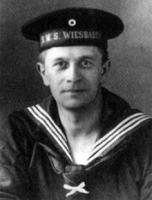A beautiful video of sailing aboard the Windjammer Angelique. The 95′ ketch-rigged Angelique was built specifically for the windjamming trade in 1980 and sails from Camden, Maine.
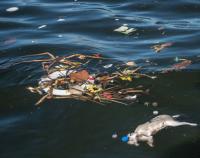 In May 2104, we posted “Sailing in Sewage — Olympic Sailors in Guanabara Bay at Rio de Janeiro.” The post was about the challenge of sailing the Olympic trials in Guanabara Bay, a body of water thoroughly befouled with garbage and sewage. Local officials promised that the Bay would be cleaned up in time for the Olympics themselves. Now, sadly, two years later, not enough has changed.
In May 2104, we posted “Sailing in Sewage — Olympic Sailors in Guanabara Bay at Rio de Janeiro.” The post was about the challenge of sailing the Olympic trials in Guanabara Bay, a body of water thoroughly befouled with garbage and sewage. Local officials promised that the Bay would be cleaned up in time for the Olympics themselves. Now, sadly, two years later, not enough has changed.

The “ark” under construction in Williamstown, Ky. Photo: Kyle Grillot for The New York Times
The latest and greatest ark fantasy exhibit is opening in northern Kentucky. The new “Ark Encounter” bills itself as “one-of-a-kind, historically themed attraction. In an entertaining, educational, and immersive way, it presents a number of historical events centered on Noah’s Ark as recorded in the Bible. As the largest timber-frame structure in the US, the 510-foot-long full-size Ark is designed to be family-oriented, historically authentic, and environmentally friendly.”
It is hard to know whether to consider the claims of historical authenticity to be a joke or simply a outright lie. The “young earth creationists” behind this absurd project appear to be in deadly earnest, so the former is unlikely. The “ark” itself is generally shaped like a ship, but is, in fact, a building, featuring a steel reinforced concrete foundation with a steel bracketed wood structure on top. It is safe to say that if there ever was a flood in that region of Kentucky, the structure wouldn’t float. It would be broken up and carried away by the flood waters in pieces.

Photo: C. Allain / APEI / 20 Minutes
I am not entirely sure that I get the joke. In a year when sperm whales have been washing up dead on shores around the world; dying after ingesting plastic, fishing nets and auto parts; the arrival of a beached sperm whale made entirely of plastic on a river bank near Rennes, France, seems less thought-provoking that simply poor timing. The 15′ long resin sperm whale, or cachalot plastique, if you prefer, is the work of the Captain Boomer collective based in Belgium. Why? Captain Boomer’s explanation from their website:
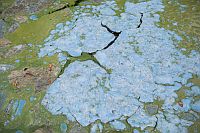
Photo: Ryan Stone for The New York Times
A massive blue-green algae bloom has hit Florida’s “Treasure Coast,” coating the beaches and inlets with a foul-smelling, sticky green-goo that some resident describe as “guacamole thick.” A state of emergency has been declared the Lee, Palm Beach, Martin and St. Lucie counties, the four counties hardest hit by the stinking, oozing muck.
There is no secret as to the source of the problem. This is not the first algae bloom although many consider it to be the worst. Fingers are pointing at the state and federal governments and the out-sized political influence of “Big Agriculture,” specifically the sugar industry. To quote Walt Kelly’s cartoon Pogo, “We have met the enemy and he is us.”
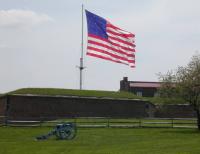
The Star Spangled Banner over Fort McHenry
Here is a lightly modified repost from two years ago that seems appropriate for July 4th.
At around 6AM, Sep 13, 1814, the British Royal Navy began a fearsome bombardment of Fort McHenry at the mouth of Baltimore harbor. The British had attempted to take Baltimore by both land and sea. The British army attack stalled the day before, with the loss of Major General Robert Ross. As the British Army prepared a second attack on the American earthworks, the Royal Navy took its turn. Baltimore’s defenders had sunk 22 ships in the main channel. Any attempt to clear the channel would bring the British under the the guns of Fort McHenry and other American batteries.
 In Zadar, the oldest city in Croatia on the Dalmatian Coast of the Adriatic, there is an sea organ which plays the timeless music of the waves. The sea itself is the composer and performer of the music. Waves force air through 35 harmonically tuned tubes built into a promenade of marble steps, creating random and yet hauntingly musical tones. The sea organ was created by architect Nikola Basic in 2005, who received the European Prize for Urban Public Space for this project.
In Zadar, the oldest city in Croatia on the Dalmatian Coast of the Adriatic, there is an sea organ which plays the timeless music of the waves. The sea itself is the composer and performer of the music. Waves force air through 35 harmonically tuned tubes built into a promenade of marble steps, creating random and yet hauntingly musical tones. The sea organ was created by architect Nikola Basic in 2005, who received the European Prize for Urban Public Space for this project.
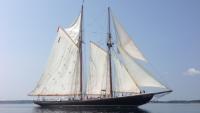 The Bluenose II is now several weeks into her summer sailing season. Setting sail from Lunenburg, NS, she carries a professional crew of six and 12 young people, recruited from around the province and across Canada. This summer, the replica fishing/racing schooner will sail to Iona, on the Bras d’Or Lake in Cape Breton and is expected to be there from July 17 to July 19.
The Bluenose II is now several weeks into her summer sailing season. Setting sail from Lunenburg, NS, she carries a professional crew of six and 12 young people, recruited from around the province and across Canada. This summer, the replica fishing/racing schooner will sail to Iona, on the Bras d’Or Lake in Cape Breton and is expected to be there from July 17 to July 19.
Bluenose II is operated by the Lunenburg Marine Museum Society on behalf of the Province of Nova Scotia. The project to build the schooner has been challenging. Years behind schedule and with a budget that has ballooned from $14 million to a projected $25 million, the project is not without its critics. Most recently, concerns have been raised by the appearance of the new schooner. Gaps between the bulwark planking caused marine consultant and longtime schooner captain, Lou Boudreau, to say, “The only way to describe this is that it’s coming apart at the seam.” He went on to say, “The split planks aren’t really the issue. … It opens the door to many other questions.”
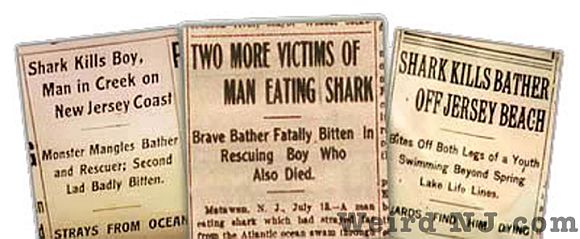 One hundred years ago today, Americans learned to be afraid of sharks. On the evening of July 1, 1916, Charles Vansant, 25, of Philadelphia was on vacation with his family at the beach-side resort town of Beach Haven on the New Jersey Shore. He decided to go for a swim before dinner. Shortly after he dove into the surf, he was attacked by a large shark and died of loss of blood.
One hundred years ago today, Americans learned to be afraid of sharks. On the evening of July 1, 1916, Charles Vansant, 25, of Philadelphia was on vacation with his family at the beach-side resort town of Beach Haven on the New Jersey Shore. He decided to go for a swim before dinner. Shortly after he dove into the surf, he was attacked by a large shark and died of loss of blood.
Worse was yet to come. Five days later and 45 miles to the north in the resort town of Spring Lake, New Jersey, Charles Bruder, 27, a Swiss bell captain at a local hotel, was attacked by a shark while swimming. A shark bit him in the abdomen and severed his legs.
 Last January we posted about two US Navy Riverine Command Boats (RCBs) with a combined crew of ten sailors which were apprehended by Iranian Revolutionary Guard boats in the Gulf. One or both of the RCBs had suffered a mechanical failure and had drifted into Iranian waters. The sailors were released unharmed after 16 hours in custody. Now the Navy has completed its five month study of the incident. Last week the head of 5th Fleet fired Capt. Kyle Moses, the commander of the task force in charge of the riverine squadron. Now a total of nine Navy officers and enlisted personnel are facing disciplinary charges.
Last January we posted about two US Navy Riverine Command Boats (RCBs) with a combined crew of ten sailors which were apprehended by Iranian Revolutionary Guard boats in the Gulf. One or both of the RCBs had suffered a mechanical failure and had drifted into Iranian waters. The sailors were released unharmed after 16 hours in custody. Now the Navy has completed its five month study of the incident. Last week the head of 5th Fleet fired Capt. Kyle Moses, the commander of the task force in charge of the riverine squadron. Now a total of nine Navy officers and enlisted personnel are facing disciplinary charges.
The report concluded that shoddy navigation, poor maintenance and a lack of oversight created a chain of errors that resulted in the the two U.S. Navy patrol boats being seized at gunpoint in Iranian territorial waters. As reported by Navy Times:
Among the key findings of the investigation: Continue reading
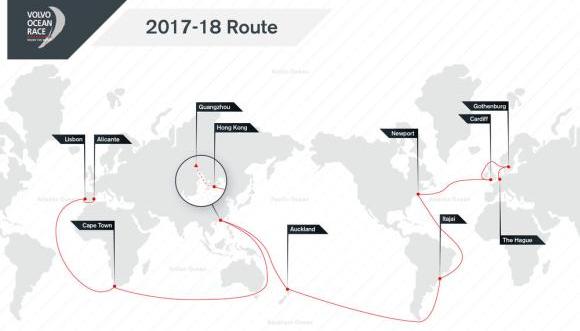 The route for the 2017-2018 Volvo Ocean Race has been announced and it is the longest and toughest of the competition’s 43 year history. The race around the world will begin in Alicante, Spain in November of next year and end eight months later in the Netherlands. The race will visit eleven cities and cover 45,000 nautical miles, of which 12,500nm will be raced in the brutal Southern Ocean. New Volvo Ocean Race CEO Mark Turner describes the race as, “More action, more speed, more tough miles and more host venues, but a shorter race – it’s an evolution in the right direction.” The competitors will be racing in Volvo Ocean 65s, 65′ one-design mono-hulls designed by Farr Yacht Design.
The route for the 2017-2018 Volvo Ocean Race has been announced and it is the longest and toughest of the competition’s 43 year history. The race around the world will begin in Alicante, Spain in November of next year and end eight months later in the Netherlands. The race will visit eleven cities and cover 45,000 nautical miles, of which 12,500nm will be raced in the brutal Southern Ocean. New Volvo Ocean Race CEO Mark Turner describes the race as, “More action, more speed, more tough miles and more host venues, but a shorter race – it’s an evolution in the right direction.” The competitors will be racing in Volvo Ocean 65s, 65′ one-design mono-hulls designed by Farr Yacht Design.
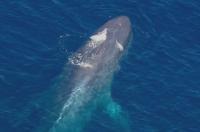 On Monday, a 70-80 foot long blue whale entangled in crab or fish nets and lines was spotted off the coast of Dana Point in southern California. A marine mammal rescue team attempted cut the nets and lines to free the whale but were only partially successful. Teams are attempting to locate the tangled whale today to finish the job.
On Monday, a 70-80 foot long blue whale entangled in crab or fish nets and lines was spotted off the coast of Dana Point in southern California. A marine mammal rescue team attempted cut the nets and lines to free the whale but were only partially successful. Teams are attempting to locate the tangled whale today to finish the job.
Blue whales can usually break out of ropes and nets because of their size and power, according to Michael Milstein, spokesman for NOAA Fisheries. Entangled humpback and gray whales are more common. However, this would be the second reported incident of a blue whale entanglement off the U.S. West Coast in two years. Last fall, a blue whale was also entangled in fishing gear.
 History was made yesterday at the Panama Canal when the container ship COSCO Shipping Panama transited the newly expanded canal. The ship carried over 9,000 TEU and has a beam of 158′ and is 984′ long, longer and significantly wider than was possible in the old canal.
History was made yesterday at the Panama Canal when the container ship COSCO Shipping Panama transited the newly expanded canal. The ship carried over 9,000 TEU and has a beam of 158′ and is 984′ long, longer and significantly wider than was possible in the old canal.
The new $5.4 billion canal expansion features two new sets channels and locks, one set each on the Atlantic and Pacific sides. It has also widened and deepened existing channels and has raised the maximum operating water level of Gatun Lake. Whereas the largest ship that could previously transit the locks could be no longer than 965′, wider than 106′, or have a draft greater than 41.2′, the new maximum dimensions are a length of 1,200′, a beam of 160.7′ and a draft of 49.9′. Previously the largest container ships that could transit the canal where roughly 5,000 TEU, now container ships of up to 14,000 TEU will be able to pass. Overall, the new expansion is expected to double the transit capacity of the canal.
Continue reading
 June 25th is celebrated globally as the Day of the Seafarer, an official United Nations observance day. What does that really mean? Opinions vary. Click here to read Barista Uno’s slightly acerbic but largely on-target perspective on the official “observance day.” Nevertheless, it is always worthwhile to remember the roughly 1.2 million seafarers who operate the 50,000 merchant ships traveling the globe, which carry 90% of all world trade.
June 25th is celebrated globally as the Day of the Seafarer, an official United Nations observance day. What does that really mean? Opinions vary. Click here to read Barista Uno’s slightly acerbic but largely on-target perspective on the official “observance day.” Nevertheless, it is always worthwhile to remember the roughly 1.2 million seafarers who operate the 50,000 merchant ships traveling the globe, which carry 90% of all world trade.
 You never know what you will find in a landfill. Paleontologist Melissa Macias was looking for fossils in the Bowerman Landfill in Irvine, California, when she spotted teeth and bones as a construction crew moved soil to create a new waste disposal area. They turned out to be 18 teeth, a flipper bone and portions of the jaw and skull of a sperm whale, all well preserved. The fossils are believed to be 10-12 million years old.
You never know what you will find in a landfill. Paleontologist Melissa Macias was looking for fossils in the Bowerman Landfill in Irvine, California, when she spotted teeth and bones as a construction crew moved soil to create a new waste disposal area. They turned out to be 18 teeth, a flipper bone and portions of the jaw and skull of a sperm whale, all well preserved. The fossils are believed to be 10-12 million years old.
Macias says that she was lucky to have spotted the fossils. “Three feet one direction it would have been taken out before I found it. Three feet to the other direction, it would have stayed buried,” she said.
Johann Wilhelm Kinau was one of the more than 8,000 sailors who died in the Battle of Jutland just over 100 years ago. Kinau was 36 when he was killed while serving as a lookout on the German light cruiser SMS Wiesbaden. Kinau is better remembered by his pen name, Gorch Foch, the sailor poet and writer. The son of a fisherman, he worked as an accountant at a Hamburg-Amerika-Linie in Hamburg. In 1904 at the age of 24, he started publishing poetry in Low German. His most popular work, the novel Seefahrt ist Not! (Seafaring is Necessary) was published in 1913.The novel describes the lives of the deep sea fishermen of his home island of Elbe of Finkenwerder. Kinau was drafted into the German Navy two years later.
Although he died quite young, his legacy has endured. The first of three sailing school ships built for the German Reichsmarine starting in 1933 was named Gorch Foch in his honor. Continue reading
 Congratulations to the schooner Spirit of South Carolina and all who sail and support her! After languishing for years, the schooner has new owners, a new captain and officers and was recently re-certified to carry passengers by the US Coast Guard. She will soon be sailing North to New England for a program of port visits and teen summer camps before returning to South Carolina in October.
Congratulations to the schooner Spirit of South Carolina and all who sail and support her! After languishing for years, the schooner has new owners, a new captain and officers and was recently re-certified to carry passengers by the US Coast Guard. She will soon be sailing North to New England for a program of port visits and teen summer camps before returning to South Carolina in October.
A few years ago, we posted about “The Unfortunate Economics of Tall Ships.” Finding the money to operate a tall or historic ship is a tough business. More fail than succeed. One of the several ships we mentioned that had fallen on hard times was the schooner Spirit of South Carolina. The 140′ schooner’s keel was laid in 2001 and she was launched in 2007. She was put up for sale in 2011 when the foundation that built and operated her ran into financial problems. For several years, there were no buyers. Finally, in 2014, the bank which held her mortgage sold her at auction to two Charleston businessmen, Tommy Baker and Michael Bennett. They have brought the schooner back into service and will be operating her as a 501 (c)(3) non-profit organization. Receiving the USCG Certificate of Inspection (COI) is a major milestone.
 After being tied to the dock for several years, the ARA Libertad, the Argentine Navy’s training ship, is sailing again. For the last three years, the ship has been entangled in a more than decade long battle over Argentine debt related to a financial crisis in 2002. In early March, Argentina settled the dispute with its remaining creditors, including several US hedge fund “vulture” capitalists, and shortly thereafter, ARA Libertad was made ready for sea. On June 3-7, she sailed to the US to participate in Sail Baltimore. She then sailed for Norfolk where she was one of the featured attractions at Norfolk Harborfest from June 9-12. Last week ARA Libertad was at Pier 86 in New York before sailing for Amsterdam on Saturday.
After being tied to the dock for several years, the ARA Libertad, the Argentine Navy’s training ship, is sailing again. For the last three years, the ship has been entangled in a more than decade long battle over Argentine debt related to a financial crisis in 2002. In early March, Argentina settled the dispute with its remaining creditors, including several US hedge fund “vulture” capitalists, and shortly thereafter, ARA Libertad was made ready for sea. On June 3-7, she sailed to the US to participate in Sail Baltimore. She then sailed for Norfolk where she was one of the featured attractions at Norfolk Harborfest from June 9-12. Last week ARA Libertad was at Pier 86 in New York before sailing for Amsterdam on Saturday.
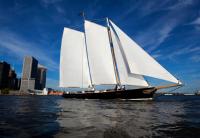
Photo: Classis Harbor LInes
Classic Harbor Line‘s schooner America 2.0 is a fascinating design. Designed and built by the Scarano brothers and delivered in 2011, the boat is, notionally, a replica of the schooner yacht America of 1851, after which the famous America’s Cup was named. America 2.0 might be called a modern interpretation of the original. It could also be called a hybrid or even simply a modern high-tech schooner. The Classic Harbor line website refers to it as a “tribute to the first schooner America.” Whatever you call the schooner, it is worth taking a closer look.

